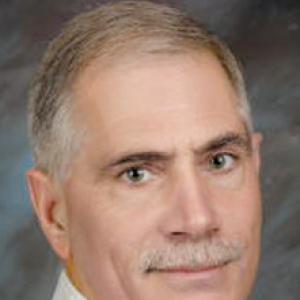Commercial
Noraca Llc/Laughlin Construction Inc., 2701 1st Ave N, Com Remodel, $75,000
Boise Cascade Building Material/Lennick Bros. Roofing & Sheetmetal, 1240 S 29th St W, Com Fence/Roof/Siding, $43,500
Askin Construction Llc/ Swenson, Randall D, 1736 Shiloh Rd, Demolition Permit Commercial, $13,500
Northwest Development Llc/Jares Fence Company, Inc, 536 Kathy Ln, Fence, $12,352
Friendship House Of Christian/Bradford Roof Management Inc, 3123 8th Ave S, Com Fence/Roof/Siding, 17,880
Imperial Investments Llc/Beartooth Constructors, 810 Wicks Ln, Com Fence/Roof/Siding, $89,000
Mic-Lyn LP/Beartooth Constructors, 810 Bench Blvd, Com Fence/Roof/Siding, $89,000
Youth Dynamics Inc/ Wegner Homes, 2334 Lewis Ave, Com Fence/Roof/Siding, $24,000
KMK LLC/ Wegner Homes, 902 Central Ave, Com Fence/Roof/Siding, $3,800
WDSS LLC/ Zane Merrell Construction LLC, 1410 38th St, Com Remodel, $22,000
SLM Properties LLC/Yellowstone Basin Construction, 1601 Central Ave, Com Remodel, $125,000
Yellowstone Bank/Hulteng, Inc., 2901 Millennium Cir, Com Remodel, $232,900
King McCall LLC/ Yellowstone Basin Construction, 2499 Gabel Rd, Com Remodel – Change In Use, $58,000
932 Grand Avenue Llc/B & C Homebuilders, 923 Grand Ave, Com Fence/Roof/Siding, $4,800
Yellowstone County/Empire Roofing Inc, 3165 King Ave E, $69,279
JSC Properties Llc/S Bar S Supply Contractor, 1410 Central Ave, Com Remodel, $2,500
Fagg Family Properties Llc/Jones Construction, Inc, 235 N 32nd St, Com Remodel – Change In Use, $425,000
Comstock Real Estate Holdings/Empire Roofing Inc, 3175 Grand Ave, Com Fence/Roof/Siding, $179,43
Red Horse Rentals LLC/Big Sky Exterior Designs, Inc, 82 W Antelope Trl, Com Fence/Roof/Siding, $24,418
Smith, David H/Big Sky Exterior Designs, Inc, 86 W Antelope Trl, Com Fence/Roof/Siding, $30,923
1201 Yellowstone Ave Llc/Big Sky Exterior Designs, Inc, 1201 – 5 Yellowstone Ave, Com Fence/Roof/Siding, $52,483
Jones, David J & Kelly R/Big Exterior Designs, Inc, 1816 Grand Ave, Com Fence/Roof/Siding, $6,549
Trailhead Builders Of Montana LLC/Trailhead Builders Of Montana, 3131 Iron Horse Trl, Com New 3+ (Multi Family), $1,328,975
Swenson, Randall D/Beartooth Holding & Construction, 1736 Shiloh Rd, $881,705
School District #2/Star Service, Inc., 1801 Bench Blvd, Com Remodel, $200,000
The Billings Gazette/S Bar S Supply Contractor, 501 N 22nd St, Com Remodel, $60,000
Opportunity Bank Of Montana /Dick Anderson Construction, 1005 N 27th St, Com Remodel, $950,000
Witham, Robert J & Donna R/Lake Elmo Coin-Op, 1903 Grand Ave, Com Remodel – Change In Use, $95,000
Residential
Maul, Randy W & Susan M, 1503 12th St W, Res New Accessory Structure, $51,840
Oakland Built Homes Inc /Oakland Built Homes Inc, 904 Presidio Ln, Res New Single Family, $174,422
Oakland Built Homes Inc/Oakland Built Homes Inc, 908 Presidio Ln, Res New Single Family, $174,984
Oakland Built Homes Inc/Oakland Built Homes Inc, 912 Presidio Ln, Res New Single Family, $174,422
Oakland Built Homes Inc/Oakland Built Homes Inc, 916 Presidio Ln, Res New Single Family, $172,860
Oakland Built Homes Inc/Oakland Built Homes Inc, 924 Presidio Ln, Res New Single Family, $167,668
Oakland Built Homes Inc/Oakland Built Homes Inc, 920 Presidio Ln, Res New Single Family, $174,984
Oakland Built Homes Inc/Oakland Built Homes Inc, 921 Presidio Ln, Res New Single Family, $172,270
Oakland Built Homes Inc/Oakland Built Homes Inc, 915 Presidio Ln, Res New Single Family, $167,668
Oakland Built Homes Inc/Oakland Built Homes Inc, 911 Presidio Ln, Res New Single Family, $174,984
Stordahl, David Michael & Amy/Wells Built Inc., 2107 S Stone Creek Trl, Res New Single Family, $831,105
Oakland Built Homes Inc/Oakland Built Homes Inc, 807 Presidio Ln, Res New Single Family, $172,270
Oakland Built Homes /Oakland Built Homes Inc, 803 Presidio Ln, Res New Single Family, $174,422
Legacy LLC/CDH, LLC, 5303 Rich Ln, Res New Single Family, $321,576
Neary, Richard & Marcee F/Mike’s Handyman Service, 1529 Avenue F, Res New Accessory Structure, $50,000
Houghton, Nels & Rochelle, 5873 Summerwood Cir, Res New Accessory Structure, $40,000
Big Sky Contractors/Big Sky Contractors LLC, 1111 Clark Ave, Res New Accessory Structure, $11,700
Cox, Paul L & Rachel E, 716 N 31st St, Res New Accessory Structure, $46,464
Felton Associates Inc/Green Jeans Llc, 1322 Jean Ave, Res New Single Family, $254,686
Na /Trails West Homes Llc, 822 Grouse Berry St, Res New Single Family, $247,732
Trails West Homes Llc /Trails West Homes Llc, 804 Grouse Berry St, Res New Single Family, $247,732
McCall Development Inc /McCall Development, 6109 Eva Marie Ln, Res New Single Family, $277,720
Cox, Paul L & Rachel/Jorden Construction, 716 N 31st St, Res New Two Family, $482,620
Wattles, Jeremy S & Danelle/Big Sky Custom Builders, 305 Sahara Dr, Res Addition Single/Duplex/Garage, $11,000
McCall Development Inc/McCall Development, 6133 Farmstead Ave, Res New Accessory Structure, $25,344
Oakland Built Homes Inc/Oakland Built Homes Inc, 903 Presidio Ln, Res New Single Family, $174,984
Oakland Built Homes Inc/Oakland Built Homes Inc, 907 Presidio Ln, Res New Single Family, $172,860
High Sierra II Inc/Infinity Home LLC , 403 Montecito Ave, Res New Single Family, $198,150
HLL LLC/Yellowstone Property Solutions LLC, 5341 Amherst Dr, Res New Single Family, $250,446
Ochsner, Kalena/Cougar Construction, 5130 Clemson Dr, Res New Single Family, $248,000
McCall Development Inc/McCall Development, 6133 Farmstead Ave, Res New Single Family, $257,768
Lorenz Construction /Lorenz Construction, 3343 Pipestone Dr, Res New Single Family, $231,967
McCall Development Inc/McCall Development, 6103 Eva Marie Ln, Res New Single Family, $251,904
High Sierra II Inc/Infinity Home LLC, 1531 Rancho Vista Ave, Res New Single Family , $194,306
LC Custom Homes Inc/LC Custom Homes, 6173 Masters Blvd, Res New Single Family, $376,706
DCL Ventures LLC/Infinity Home LLC, 5440 Riesling Ln, Res New Single Family, $354,780
Veitor Properties Llc/Sureshot Construction, 608 Avenue F, Res New Accessory Structure, $34,944
Zweegman, Brian, 1119 Pepper Ln, Res New Accessory Structure, $50,000
NMTP 002 Llc/Better Building Technologies Llc, 6328 Ridge Stone Dr, Res New Single Family, $207,549
Trailhead Builders Of MT/Trailhead Builders Inc, 1413 Carson Way, Res New Single Family, $255,761
Copper Ridge West Inc/Infinity Home LLC, 7032 Shiny Penny Way, Res New Single Family, $242,671

